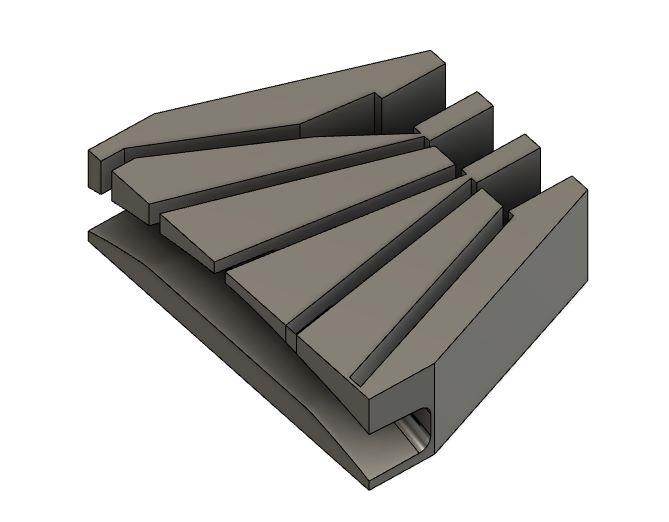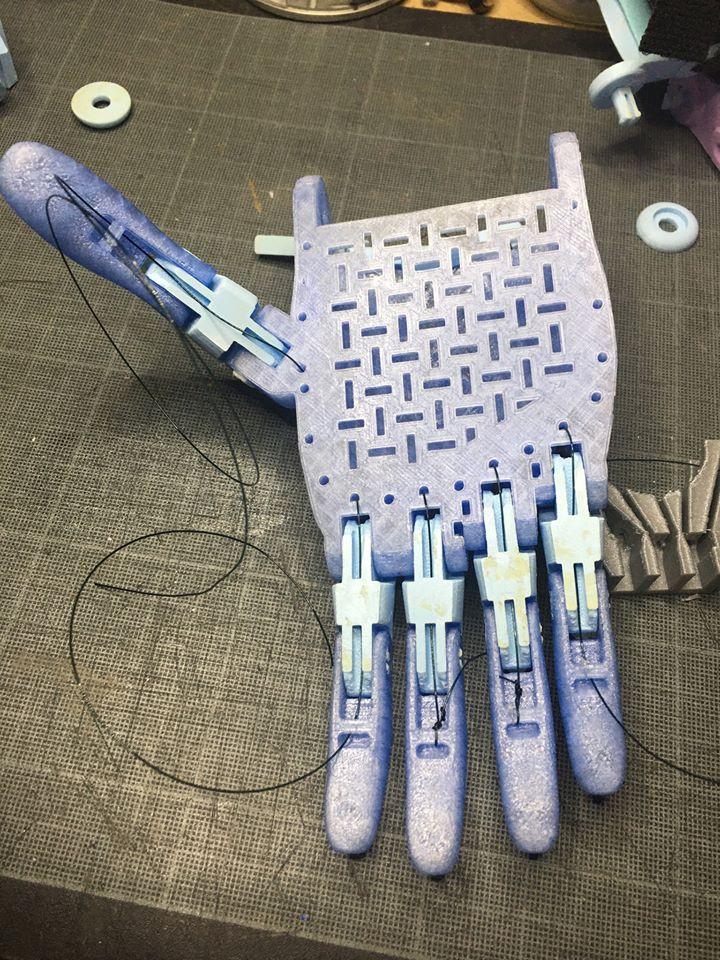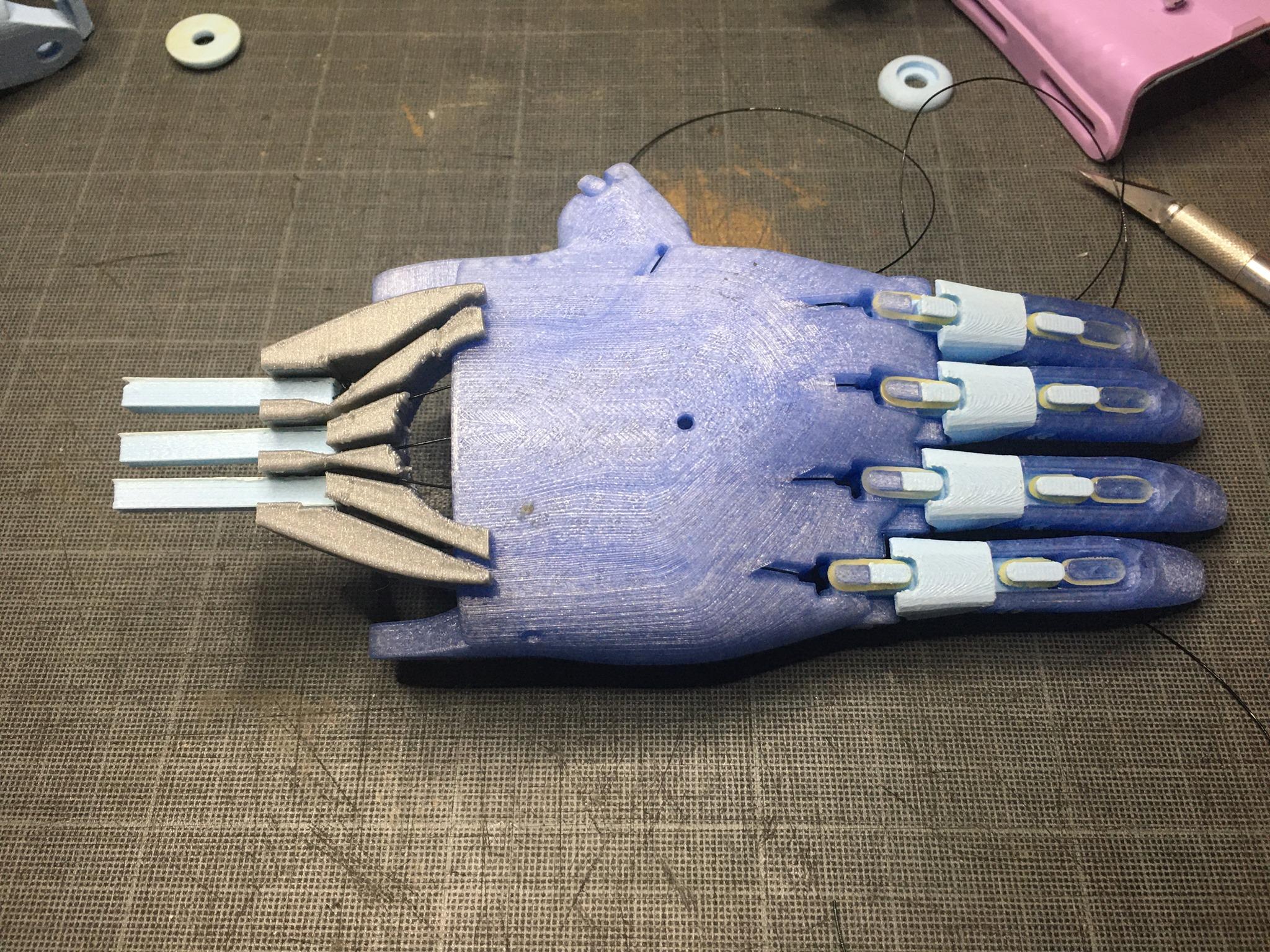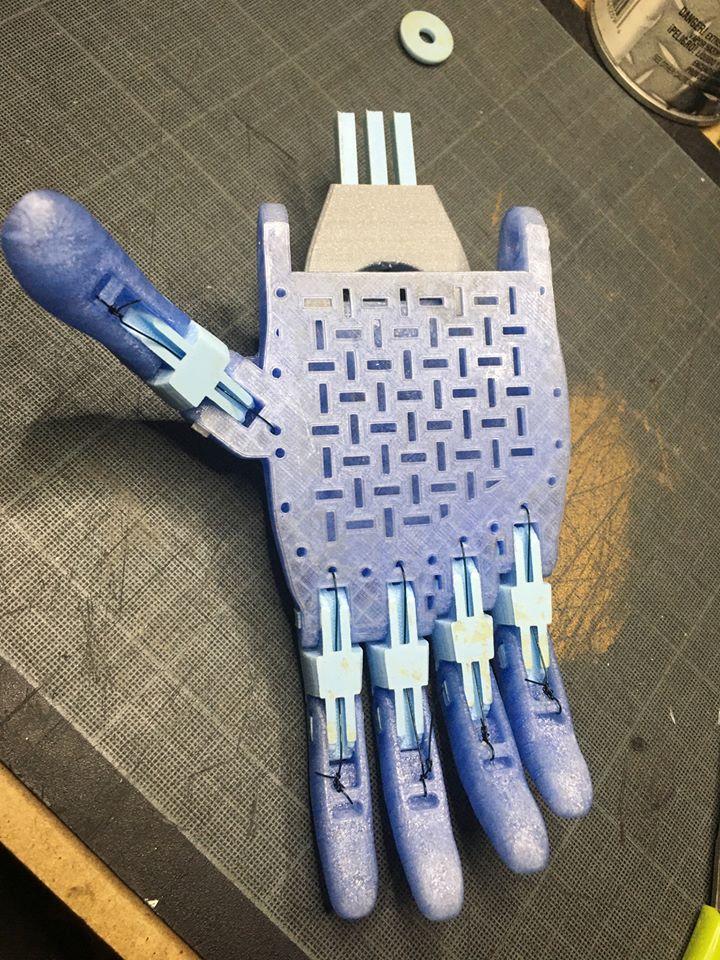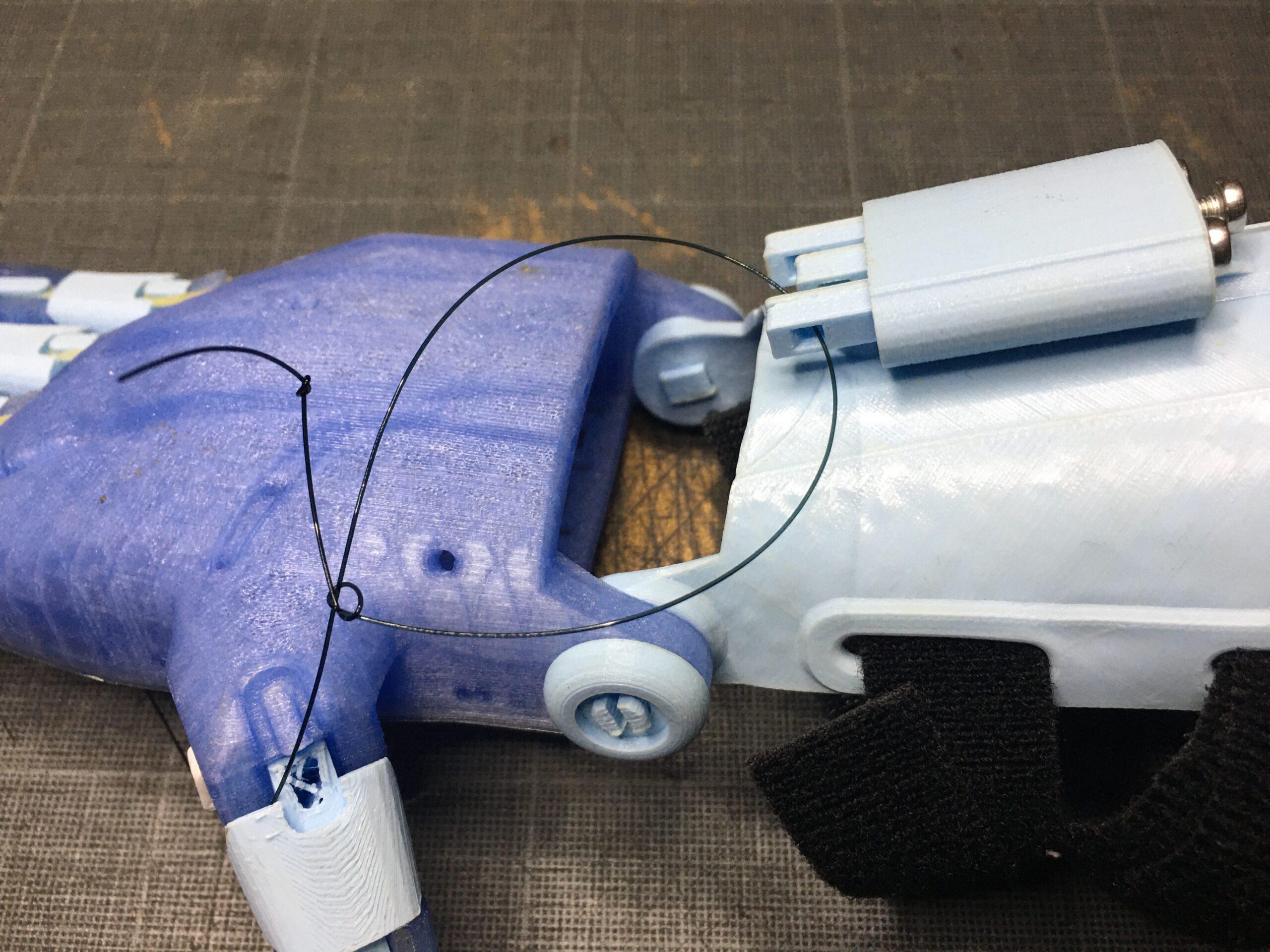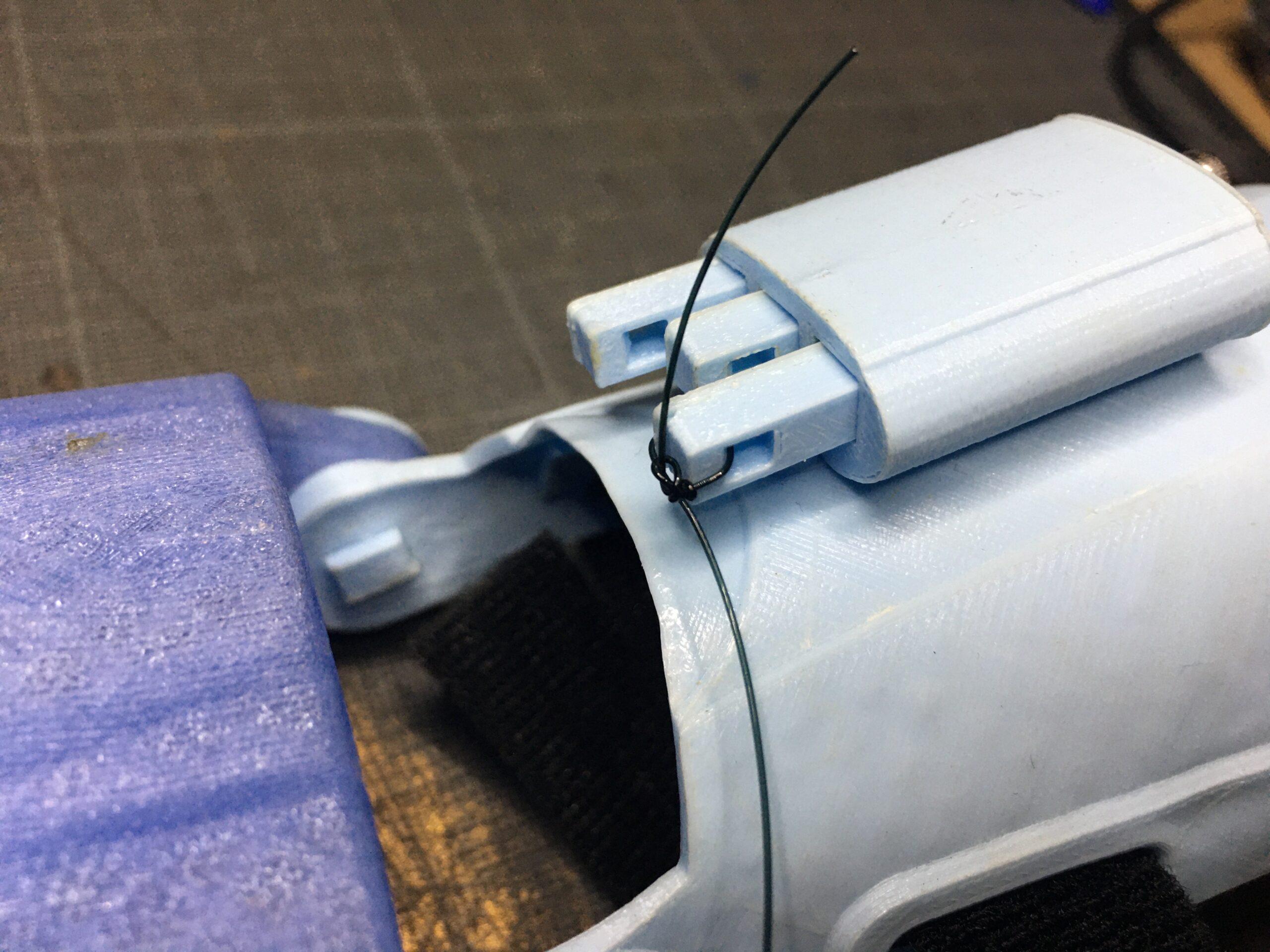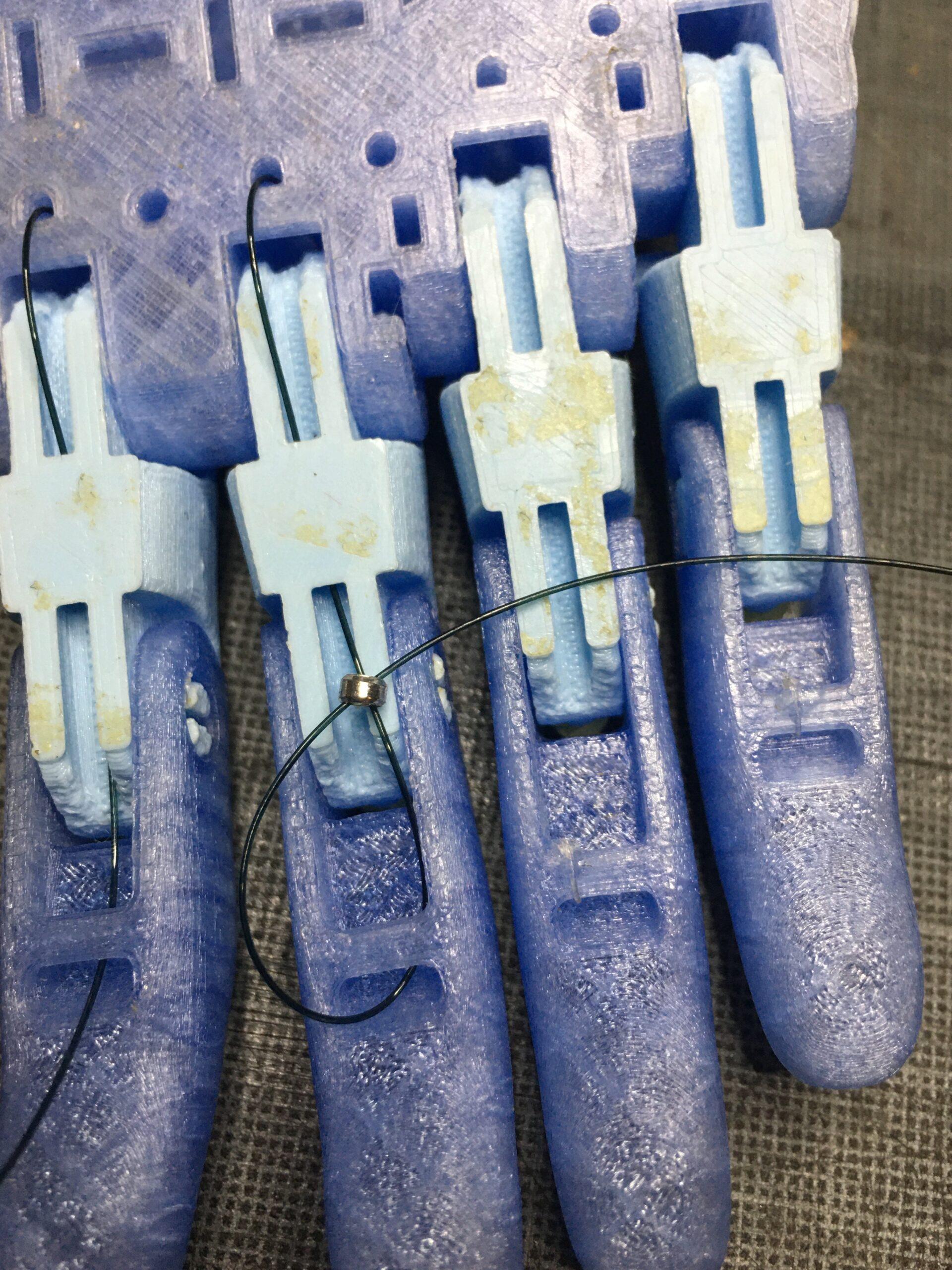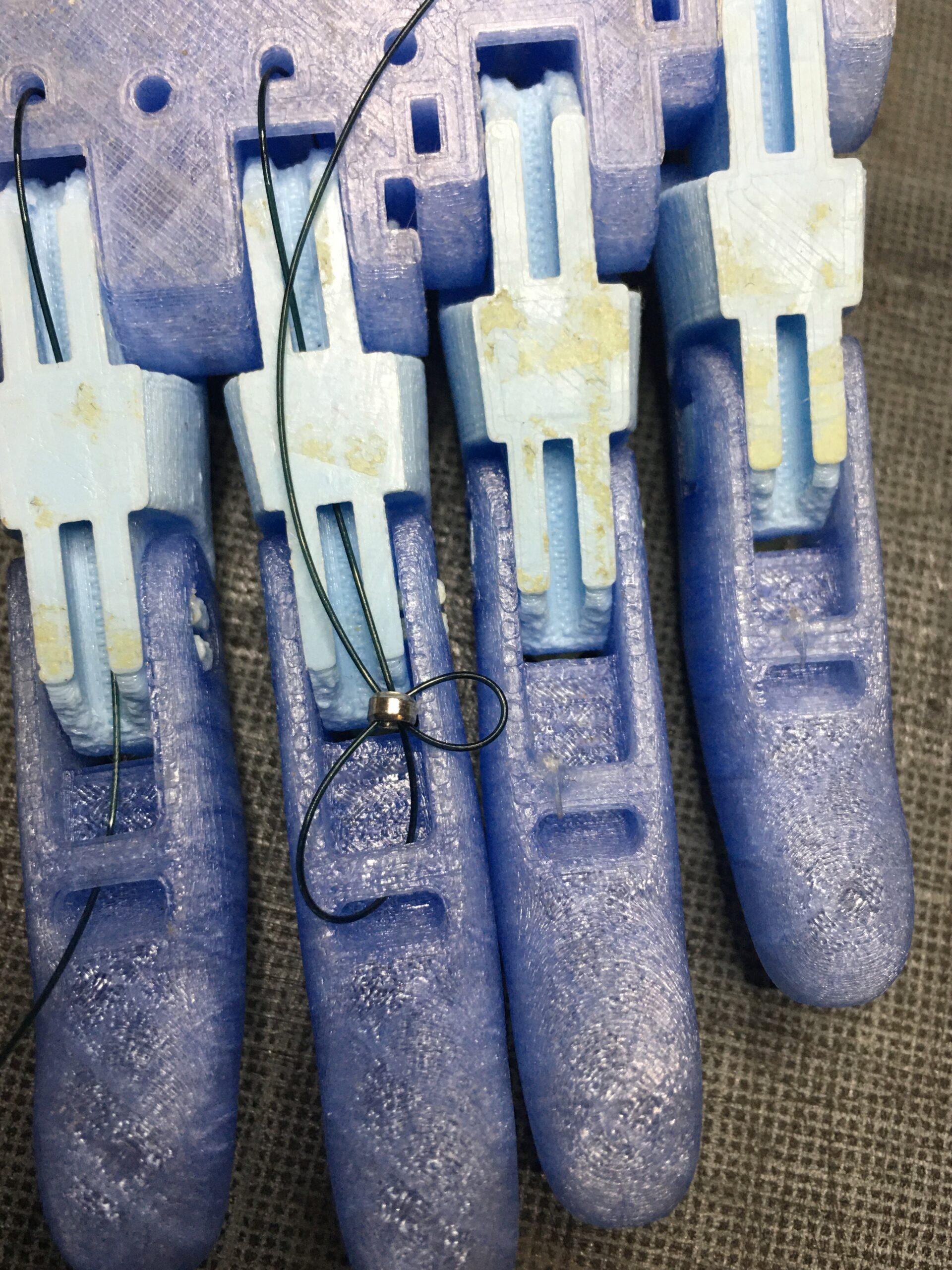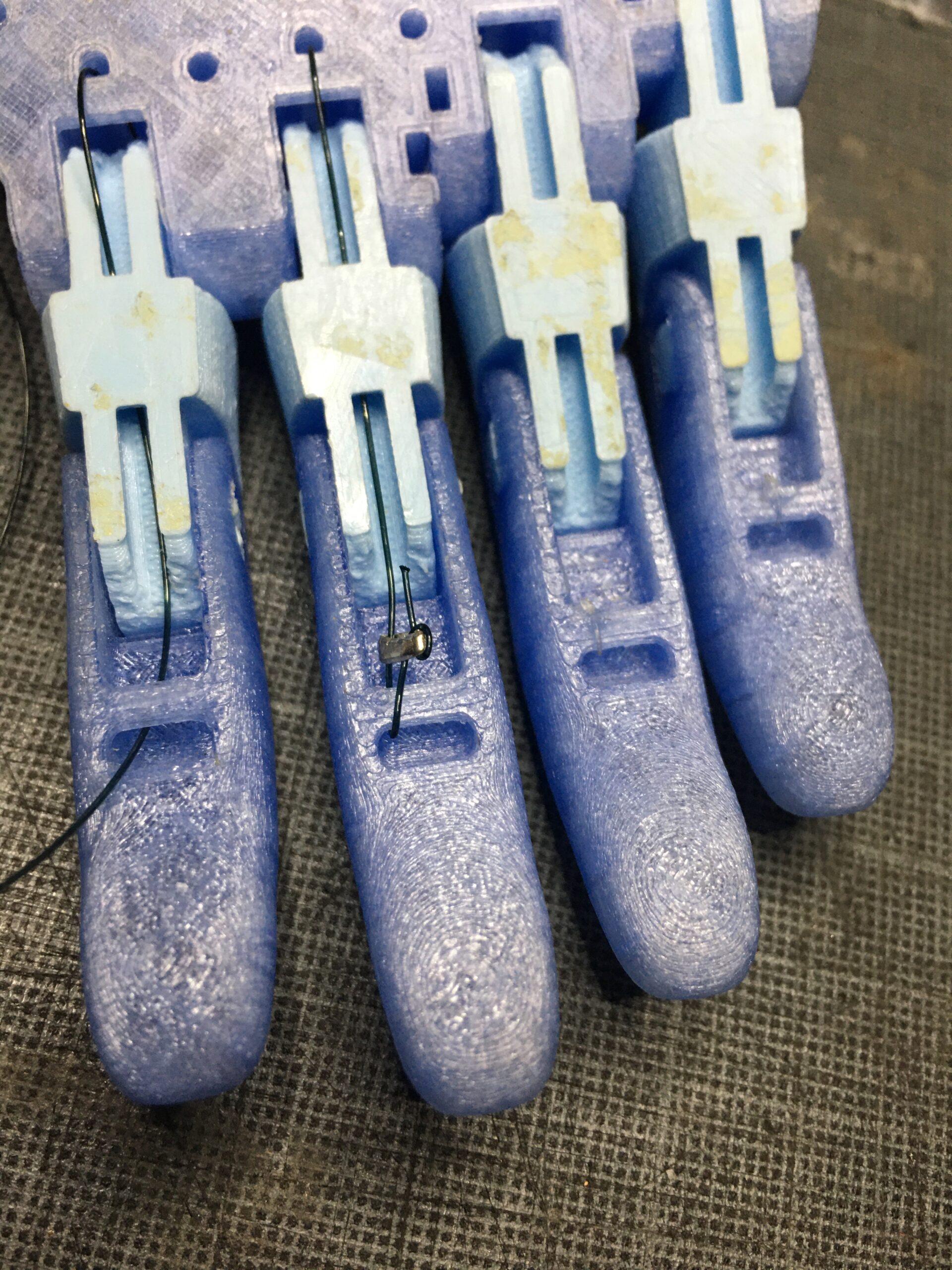The tendons are in non-elastic monofilament nylon thread. They are used to close the fingers when the user bends the wrist or the elbow, depending on the device, hand or arm.
They pass through the channels of the palm and under the fingers, and are attached to the bridges at the ends of the fingers.
With the three-pin tensioner we recommend, only the thumb wire is attached to the tensioner pin. For the other four fingers the thread just goes through the eye and down to the finger next to it. The index and middle fingers are thus wired together, as are the ring and little fingers.
Besides the benefit of halving the number of knots and simplifying assembly, this arrangement provides a semi-adaptive grip that will be more effective than if the threads were all tied on the eye of a tensioner pin.
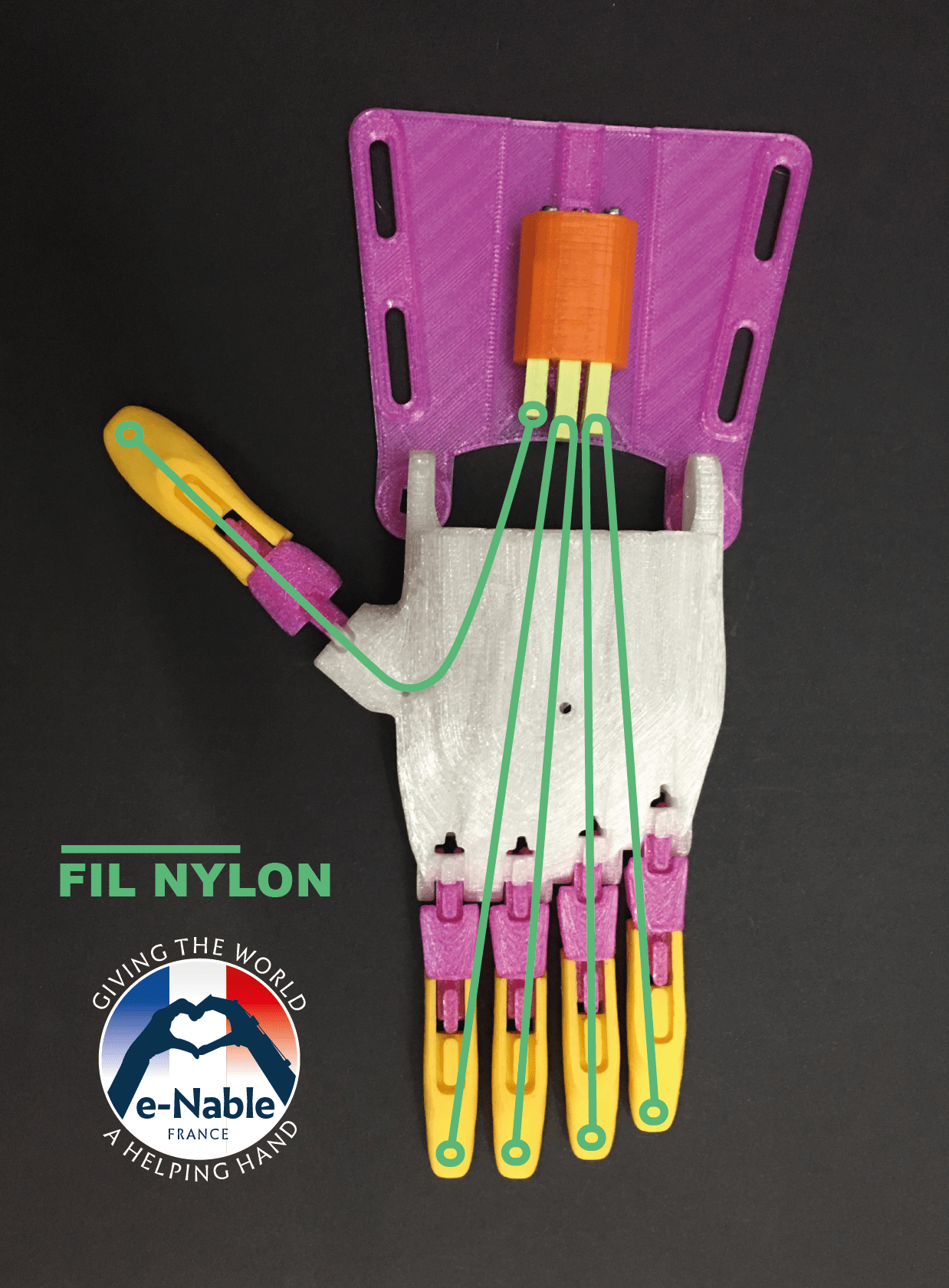
Classic cabling
Note: the mechanical assembly of the hand must be completed.
Index-middle finger: Start with the tip of the index finger and pass the nylon thread through the channels under the fingers, then go up into the channel above the palm. Pass it through the eye of the middle pine, and go back down into the channel of the palm going to the middle finger. Finish by passing in the channels under the phalanges of the middle finger, tie the thread on the bridge at the end of the finger. Cut the thread that protrudes from the index finger, leaving a good length (15cm) but do not tie it yet.
Little finger-ring finger: repeat the same operation for these two fingers using the pin of the tensioner furthest from the thumb. When finished you should have one end of the thread tied on the little finger and one length should extend beyond the ring finger.
Thumb: Tie the thread over the eye of the nearest tensioner pin, pass it through the palm channel leading to the thumb, then back down under the finger and into the channels under the phalanges. Leave a length of about 15cm and cut the thread.
Wiring finalization
This step will finalize the knots and straighten the gauntlet at 30 ° from the horizontal.
Make sure the tensioner pins are tightened halfway. They will be used for fine adjustment which will allow identical tendon tension to be obtained on all fingers, and must be able to be tightened or loosened as needed.
Make a single knot on the bridge at the end of the middle finger with the length of thread that protrudes. Stretch it until the gauntlet is straightened back, which should form an angle of 30 ° with the horizontal.
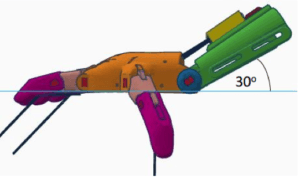
When it’s done, finalize the knot with a crimping bead or by stacking several other knots on top of each other.
Repeat with the little finger, then with the thumb.
The wiring is finished, by operating the device (pressing the gauntlet while keeping the palm in position) the fingers should close.
If they don’t all close at once, use the tensioner screws to compensate.
In the closed position, the thumb should come in contact with the index finger.
Knots
All fishermen know it, the knots on the nylon thread have the habit of undoing themselves.
When your final knots are made and you are happy with the wiring, secure them with a drop of cyanoacrylate glue (super glue).
Alternatively you can use crimping beads or tubes, which avoid having to tie knots. Pass the thread through it, crush it with pliers, it’s done.
Crimping beads are used to make necklaces, crimp tubes by fishermen.
Wiring with wrist blocker
The wrist blocker is used, as its name suggests, to immobilize the palm and gauntlet at the right angle of 30 ° while you do the wiring with complete peace of mind.
Files can be downloaded here : https://www.thingiverse.com/thing:4193160
An explanatory video is available here : https://www.youtube.com/watch?v=AVLwvp_xJTs
Once the wrist is locked, perform conventional wiring.

Wiring before wrist assembly
This adapter makes it very easy to achieve perfect wiring just by having the palm and fingers together, before assembling the gauntlet.
The file can be downloaded here : https://www.thingiverse.com/thing:4202305
Start by passing the wires in position, not forgetting the pins.
The thumb pin should be attached to the end of its wire.
Finalize the knots. Don’t be afraid to tighten the wires, the correct distance is dictated by the adapter.

